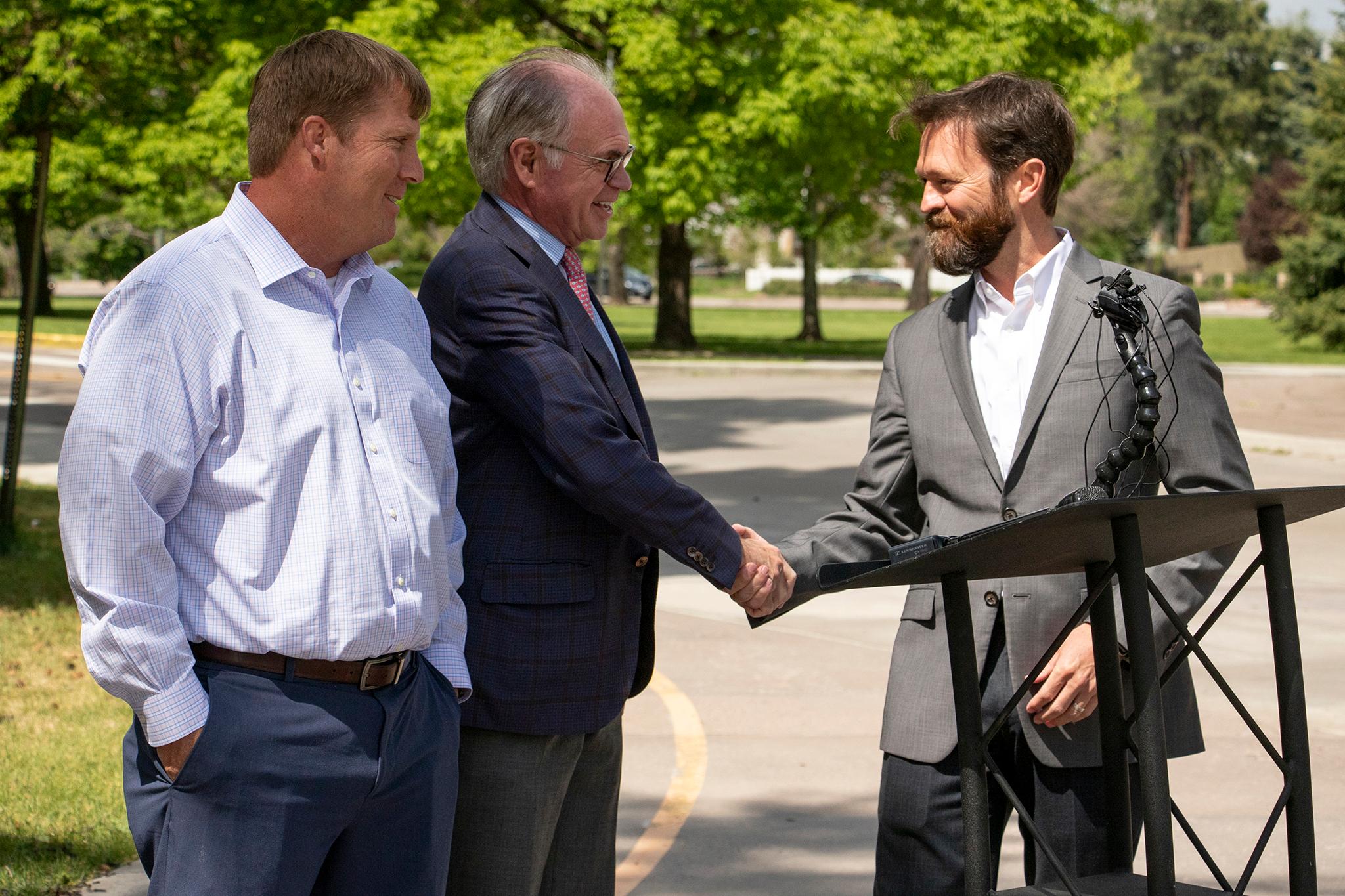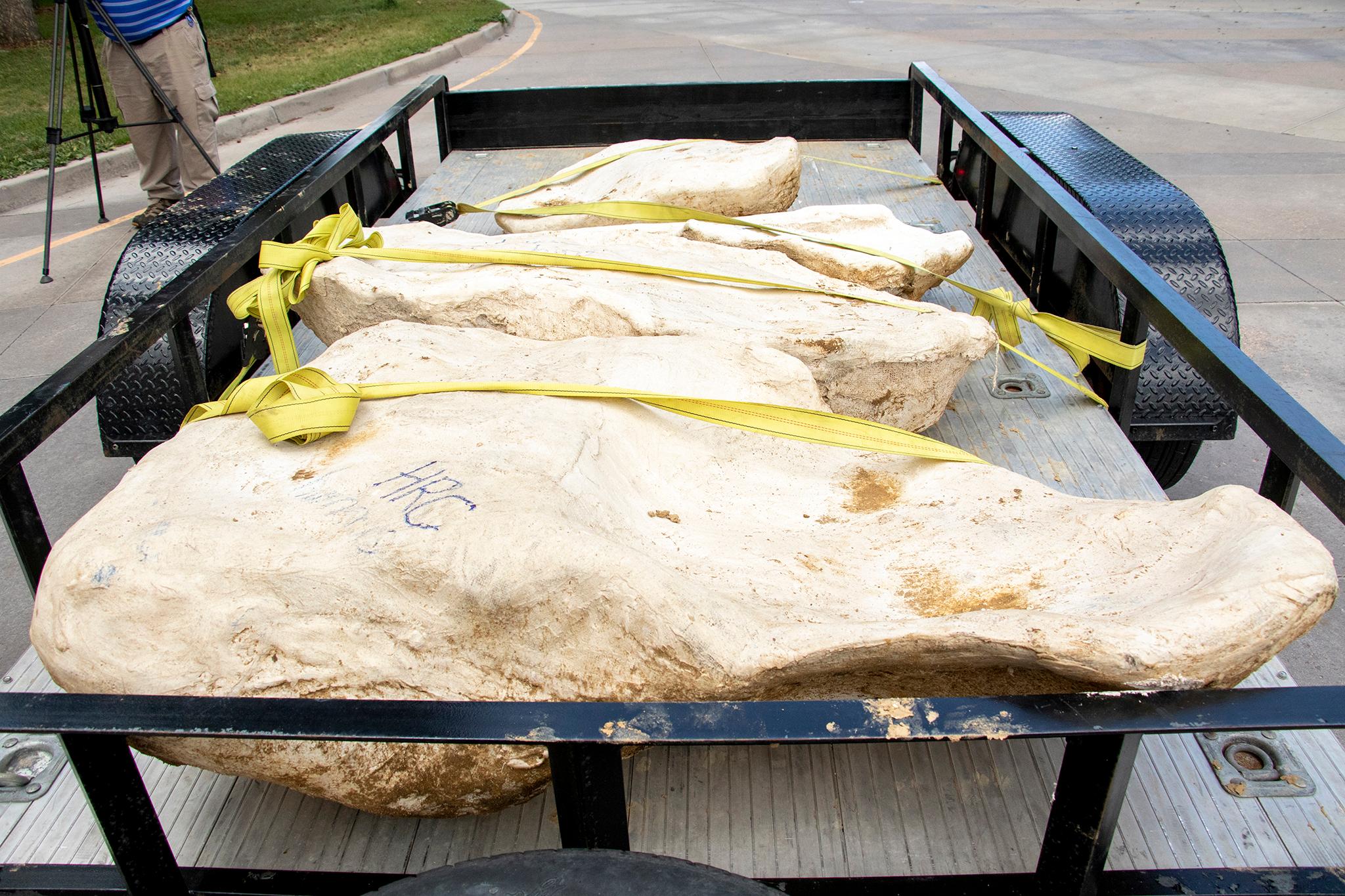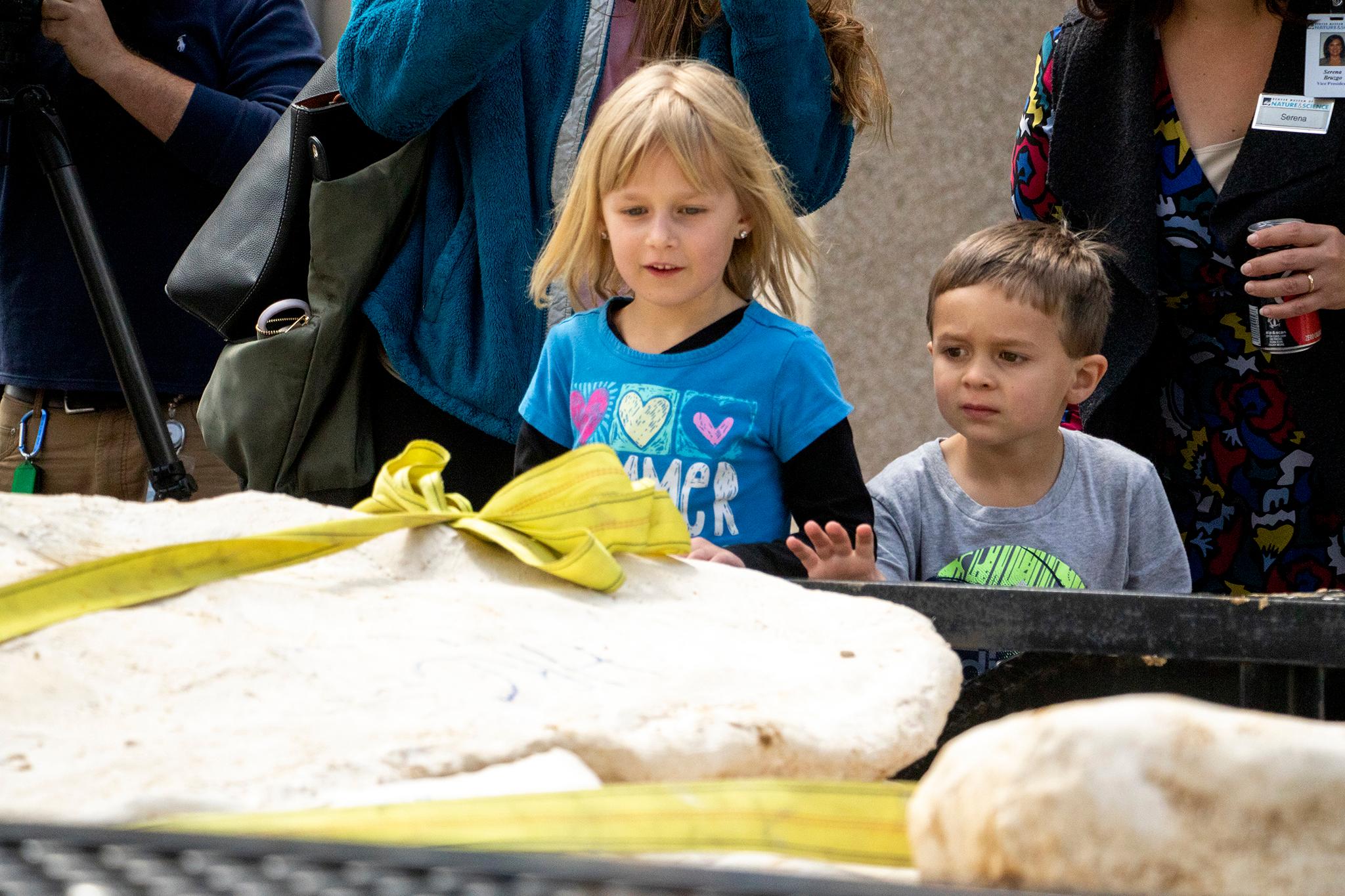Dave Rahm, a project director with Brinkman Constructors, got a call a few weeks ago that one of his guys might have found a dinosaur at his Highlands Ranch job site. This sounded like a pretty tall tale.
"I didn't actually believe him," he recalled.
But he headed down to the hole in the ground, near where more Wind Crest retirement homes were being built, and took a look. What ensued was something of a debate. Maybe it was just a rock? Or petrified wood? The guy who bumped into the mysterious mass was pretty sure he'd hit bone, so they called the Denver Museum of Nature & Science to figure it out.
They were, indeed, fossils. So Rahm called his client, Wind Crest executive director Craig Erickson.
"You guys need to decide what to do with them," Rahm told him. "You have to decide whether you want to donate them or not."
This is not something that Erickson has ever dealt with, so it caught him off guard. He did some Googling and learned that because the bones were on land owned by his nonprofit, they belonged to them. He found some cases where private finds were sold to private collectors but, he said, "We didn't feel there was any need to do that."
So instead, Wind Crest decided to give them to the museum. After a few weeks of digging, more than 20 fossils were excavated. They arrived at the museum on Wednesday, just 66 million years (or so) after the dinosaur died. It's either a triceratops or a torosaurus, like the one discovered in Thornton in 2017.
At a press gathering, Denver Museum of Nature & Science President and CEO George Sparks called Erickson and Rahm "heroes."
"If they didn't call us, these would be forever lost," he told reporters and staff who'd gathered around.


From an international perspective, these guys could actually be viewed as fairly heroic.
In February, The Guardian reported that scientists have called for a worldwide end to dinosaur fossil sales. As it happens, a booming market has driven prices far higher than scientific institutions and museums are able to pay. A fossil auction appeared last year at Art Basel Miami and attracted the likes of Nicolas Cage and Leonardo DiCaprio. The story says scientists are concerned about "not only the loss of scholarship" but also "the diminution" of scientific work by turning specimens into fancy apartment furnishings.
A horned dinosaur skull was listed last May on Ebay for $16,000 - it sold, though the site only says it went for the "best offer" and doesn't list a specific figure. The auction site is full of fossil sales, both old and new.
But Erickson said Wind Crest wasn't tempted to make a buck or keep the bones for their residents.
"We figured they were going to be much more valuable to a museum than they would be to a retirement community," he said, "so it wasn't a hard decision."

So Wind Crest's attorneys signed a "fossil transfer agreement" - their first one - and the dinosaur was thereby transferred to the museum.
Erickson said he's not sure there's much to gain from the donation.
"As a nonprofit, I don't know if we would get a tax benefit," he said. "Maybe a little PR."













